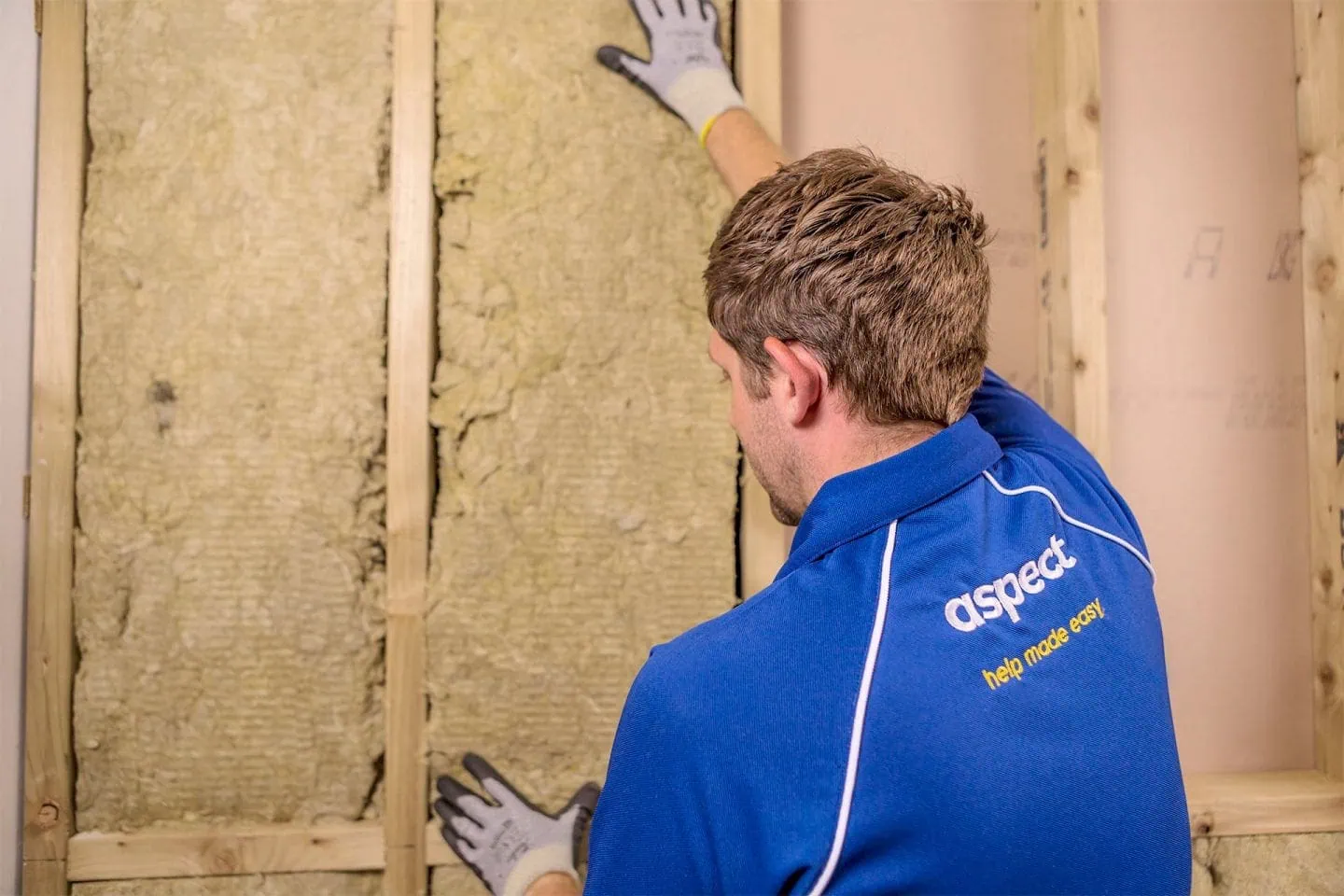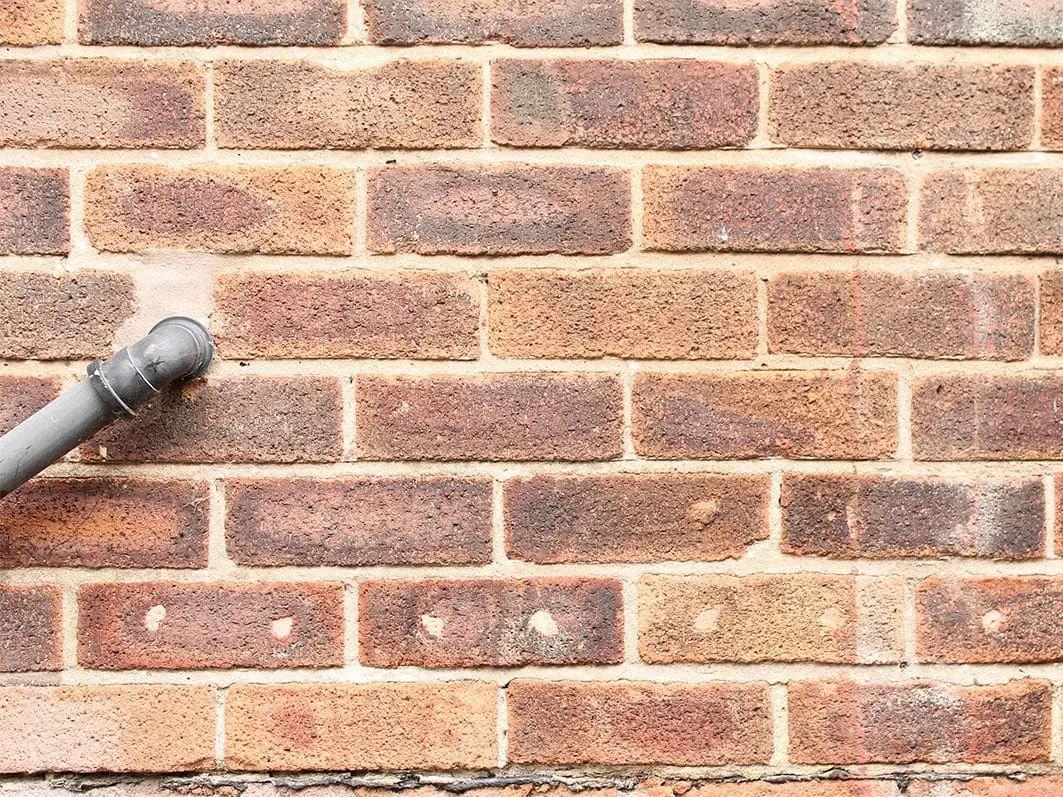How to Insulate Walls in Your Home
If you’re wondering how to make your old house energy efficient without sacrificing its external character and style, there’s a special technique for homes with single skin walls called solid wall insulation. Investing in wall insulation not only helps you save on heating bills, but it can improve the energy efficiency of your property and positively impact your energy performance certificate (EPC) rating.
So, if you’re sitting in a period property and wondering if investing in wall insulation applies to you, this guide from our experts can help you understand how to improve your EPC rating and reduce the amount of heat being lost through your single skin walls.

Understanding old house construction in the UK
External walls in the UK are typically constructed using one of two methods, single skin or cavity.
Single skin walls
Houses built before the 1920s are likely to have been built with single skin walls (the walls of a property that face the outside, rather than the internal walls that separate rooms). A single skin wall is composed of a single layer, without any space or insulation in between the solid wall and its components. This method of construction is often found in Victorian properties and doesn’t provide the level of insulation that’s required by current building regulations.
Cavity walls
A cavity wall is where an inner wall is built with blocks next to an external wall that’s built with bricks with a gap in between them. Newer homes that were built in the last 50 years should have insulation installed in the gap between the internal and external walls. If you don’t know whether there’s insulation in your cavity wall, you can check your brick wall for small circular holes that have been cemented in. These will have been made on your outer walls to access the cavity and insert the wall insulation.

Insulating solid walls in old houses
There are two methods of insulation for single skin walls – both internal insulation and external insulation. Whichever you choose, it’s important to insulate walls properly by using a certified tradesperson. Incorrect installation, inappropriate materials or missing requirements, such as vapour barriers, can lead to problems such as damp walls and condensation.
Internal wall insulation
Internal wall insulation, also known as solid wall insulation, is a process that involves adding insulation to the inside of external walls to increase energy efficiency and comfort. This can be done by attaching rigid boards or creating an interior stud-wall filled with insulation. While it will mean losing a couple of inches from the room dimensions, the value of the property should be higher with insulation in place. Other benefits include improving your EPC rating by lowering utility costs, increasing warmth and reducing outdoor noise.
External wall insulation
External wall insulation is another method that involves adding insulation to the outside walls. The process includes attaching mineral wool, rigid foam or cellulose insulators, followed by a special render or cladding finish. Windows typically stay in their existing positions, but proper installation around window frames is essential to maintain the building’s thermal performance, prevent thermal bridging and ensure that the building envelope remains weatherproof.
The benefits of this are the same as internal wall insulation, but it’s worth considering that building over the original brick or stone walls of a Victorian property for solid wall insulation could cause the property to lose its curb appeal.
Book an experienced carpenter

Our carpenters are here to build your solid wall insulation.
- Half-hour rates from £38.25 + VAT
- One hour minimum
- Discounted half and full-day rates
- Fixed pricing for planned work
Insulation materials for old houses
If you’re planning to install insulation in your old home, it’s important to evaluate the suitable insulation materials for your property. Every type has its pros and cons that can affect the price point, ease of installation and ecological impact.
Natural fibres
If you own an old house and prioritise sustainability, then natural fibre insulation such as cotton or sheep’s wool might be the best option for your cavity wall insulation. These fibres will effectively trap warmth inside your home and thanks to their eco-friendly nature, do so without costing the planet.
Cellulose
Insulating an old house can be expensive, but using recycled newspaper-based cellulose insulation is a budget-friendly and sustainable option. This type of insulation has been treated with borates to make it fire retardant and to protect against insects. However, it does come with some drawbacks – it can be difficult to install and potentially compress or settle over time. Therefore, it’s important to consider all factors before deciding if cellulose insulation will best suit your particular needs.
Mineral wool
Mineral wool is an excellent choice for insulating old houses. This fire-resistant insulation material, which is obtained by spinning or drawing molten rock or mineral products, provides a high R-value for resisting the flow of heat. It can be applied to various areas, including external and internal walls. Despite it being our top contender, it’s the most expensive insulation material on the market.
Rigid foam
Rigid foam insulation is ideal for accessing those hard-to-reach spaces in older homes. It forms a secure barrier on exterior walls that prevents warm air from escaping, and reduces heat loss. Additionally, this type of insulation is resistant to moisture accumulation and mould growth, making it suitable for walls that are susceptible to damp. Again, it may not be the most cost-effective method for retaining warmth in older homes, but its effectiveness in preventing thermal energy leakage makes it a worthwhile consideration for improving your EPC rating.
Improving the EPC rating of your old house
To make an old house more energy efficient and boost its EPC rating, insulating the walls is certainly going to have a positive impact. Even installing solid wall insulation on one side of the house that gets the least sun can make a difference.
Of course, you can also invest in other measures to maximise the impact. Draught-proofing can be done to reduce heat loss through openings in windows, doors, floors or chimneys. Installing heating controls can also empower you to save on your heating bills and conserve energy.
Hiring professional tradespeople
Installing insulation correctly and in compliance with regulations requires qualified professionals for the job – even more so for an old house. A specialist needs to be consulted to identify the most appropriate insulation material and suggest techniques based on the property’s characteristics and requirements.
Tip: Aspect carpenters have the experience to build internal cavity walls in your Victorian property.
If you own an old house with solid walls, insulating it is fundamental for improving its energy efficiency and lowering heating costs. Getting the most out of your insulation project relies on not just understanding your building’s construction requirements or picking the right insulation materials, but seeking the help of a certified professional to make your living space more comfortable and energy efficient this winter.
Was this article helpful?
Think we could improve this article? Please let us know